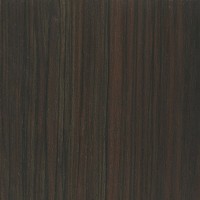 |
Common Name(s): Macassar Ebony, Striped Ebony, Amara Ebony Scientific Name: Diospyros celebica Distribution: Southeast Asia Tree Size: 50-65 ft (15-20m) tall, 1.5 ft (.4 m) trunk diameter Average Dried Weight: 70 lbs/ft3 (1,120 kg/m3) Specific Gravity (Basic, 12% MC): .89, 1.12 Janka Hardness: 3,220 lbf (14,140 N) Modulus of Rupture: 22,790 lbf/in2 (157.2 MPa) Elastic Modulus: 2,515,000 lbf/in2 (17.35 GPa) Crushing Strength: 11,630 lbf/in2 (80.2 MPa) Shrinkage: No data available |
Color/Appearance: Heartwood has dramatic striped appearance, somewhat similar to Zebrawood. Yellow to reddish brown body with darker brown or black stripes. Sharply demarcated sapwood is pale gold color.
Grain/Texture: Grain is usually straight, but can sometimes be interlocked; fine uniform texture and good natural luster.
Endgrain: Diffuse-porous; medium to large pores in no specific arrangement; solitary, with radial multiples of 2-4 common; mineral deposits present; growth rings indistinct; rays not visible without lens; parenchyma reticulate, vasicentric.
Rot Resistance: Heartwood is rated as very durable; poor insect/borer resistance.
Workability: Tends to be rather difficult to work, due to its high density, blunting effect on cutters, and its occasionally interlocked grain. The wood is also prone to checking and splitting during drying, and drying defects are not uncommon. The wood is excellent for turned objects.
Odor: Macassar Ebony has a mild, slightly unpleasant odor when being worked.
Allergies/Toxicity: Although severe reactions are quite uncommon, Ebony in the Diospyros genus has been reported as a sensitizer, and Macassar Ebony has been specifically reported to cause skin irritation. See the articles Wood Allergies and Toxicity and Wood Dust Safety for more information.
Pricing/Availability: Likely to be extremely expensive, along with most other Ebony members in the Diospyros genus. The tree grows slowly, has a very limited natural habitat, and is highly desired for the wood’s aesthetic appeal and toughness.
Sustainability: This wood species is not listed in the CITES Appendices, but is on the IUCN Red List. It is listed as vulnerable due to a population reduction of over 20% in the past three generations, caused by a decline in its natural range, and exploitation.
Common Uses: Veneer, high-end cabinetry, billiard cues, musical instruments, and other small specialty items.
Comments: So named for the Indonesian port-city of Makassar, which is one of the primary points of exportation.


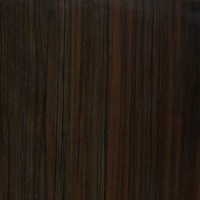
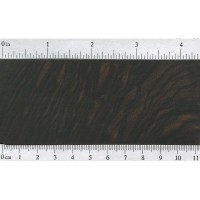
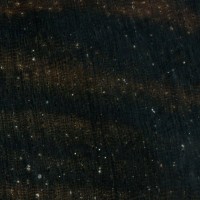
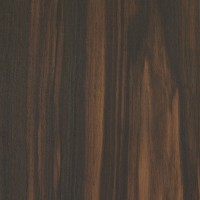



Hi I’m wondering if anyone knows what I can use to remove plaster dust which has seeoed into the creveses of my Macassar ebony kitchen cuboards?
Try soap and water, then after use bee wax to wipe it again
Also called Coromandel in UK. Not sure of the etymology, as the Coromandel coast of India is a good way from Sulawesi, but possibly where the East India Company collected their supplies of the wood and the name stuck?
No. True Coromandel ebony is from Sri Lanka and is a different tree albeit with similar appearance. Macassar ebony is more or less considered a cheaper and more abundant alternative to Coromandel as Coromandel ebony has become extremely hard to obtain, save for some virgin forests in Sri Lanka and possibly nearby Thailand, Laos, and Vietnam.
Here are some pics of a Macassar ebony pepper mill I turned. Finished with carnauba and bees wax.
woodturned bowl from macassar ebony
I bought some macassar I will turn it soon
Here’s a slice of the wood in question.
The intricacy of that grain pattern reminds me of a Cordia species, possibly bocote.
I don’t know if this is Macassar ebony or not, but I can’t seem to identify it. Can anyone help me out?
I just realized that Macassar Ebony and “Indonesian Ebony” are the same thing. How ’bout that! lol I purchased a stabilized block of it some years ago (listed as “Indonesian Ebony”) to use for a kitchen knife handle and ended up really liking it and wanting to get some more, but I didn’t find that much for sale when using that name as compared to the others. Anyway, it’s good to know. It really is a beautiful wood, especially up close and in the sunlight where you can really see all of the different colors pop.
I’d be interested to see how the knife handle turned out if you have any pics to attach to your comment.
Macassar of Makassar is indeed a city in Indonesia on Celebes (Sulawesi) island
I picked up some Macassar rods recently. I have carved a few small figurines and have fairly sore hands from the effort however it is worth it. The look of the wood is just that cool. it has a naturally silky texture.
I have a prototype acoustic guitar I have deemed ” the Sleeper ” that I have determined to have this wood for back and sides. The guitar was never marketed, and was only a prototype only. I consider myself very lucky to have found it. This guitar is the loudest of my 6 acoustics.
https://www.facebook.com/photo.php?fbid=10206087056532479&set=gm.522979561571303&type=3&theater&ifg=1
So amara ebony is more red colored. Is amara completely different than macassar?
Not to mention last but least. Can be found in the steering wheel, shift knob and emergency brake of earlier Porsche cars.
The distribution of Macassar Ebony is not in all of Southeast Asia region. Macassar Ebony is Endemic to Sulawesi island in the Republic of Indonesia. Macassar (Makassar in Indonesian) is the name of the capital city of South Sulawesi Province, the place where this Indonesian endemic species live.
The older Buck Knives (1990) used this wood for the grips. I have a 110 that has held up for 30 years. Really nice.
Yes sir. Buck 110’s and 112’s made before 1994 used this wood.
Is this article still correct? I thought ebony from Madagascar was listed under Appendix II in 2013.
Both you and the article are correct. Madagascar is in Africa, Macassar is in Asia.
The specific location, Macassar is in Indonesia. It’s the name of the capital city of South Sulawesi Province, the place where this Indonesian Endemic tree live.
Jerry Windley-Daoust
,
this is not a Madagascar ebony and can still be purchased.It is becoming more rare and that could change but I still use it for fretboard and such on some guitars. Often I will dye it to achieve the jet black look of ebony if the build requires it but it looks very beautiful with its dark woods and lighter stripes.
I’ve turned some letter openers using Macassar Ebony. What advice do you have concerning applying a clear finish?
Thanks, Ed Lehman
Use oil finish .
I am almost finished building a Baroque style lute, and have used Macassa ebony for the fingerboard, tuning pegs, bridge and peg box end, and found it perfect, very attractive. One slight trouble I’ve had is splitting on the lathe when doing the pegs. Best solution is keyless chuck in the headstock so that end is held securley, and then you hardly need any pressure from the tailstock, which minimises the likelyhood of splitting. The splits I have had I’ve filled with PVA glue with the fine dust added. Left to dry over night, anything proud turned off when dry.… Read more »
If you can find “Aged Macassar”, it should eliminate this problem. My Buscarino has a Macassar finger board, but it’s aged at least 15 to 20 years.